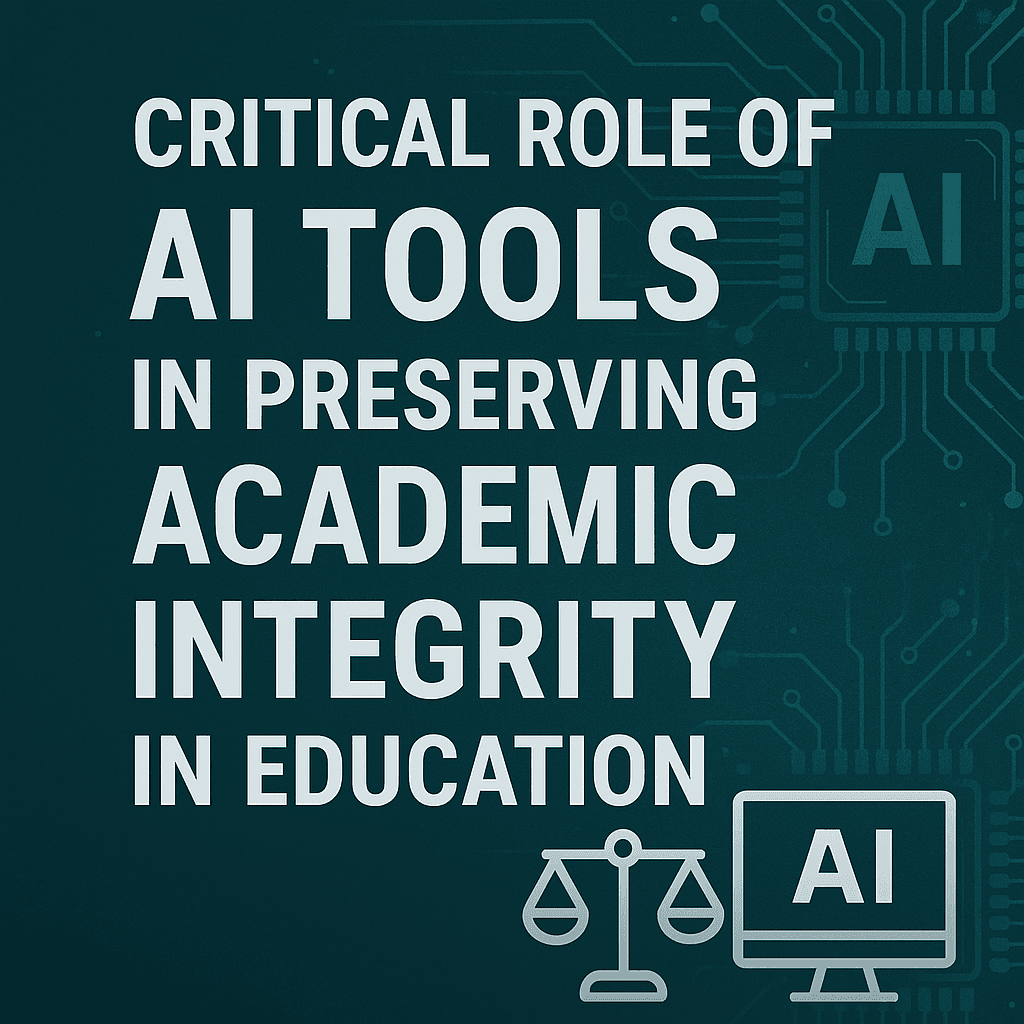
AI tools in academic integrity are emerging as powerful safeguards in today’s education systems. As artificial intelligence reshapes learning environments, institutions are turning to AI not only for personalisation and efficiency—but also to uphold ethical standards and prevent academic misconduct.
With the increasing availability of generative AI tools like ChatGPT, Gemini, and Claude, concerns about plagiarism and misrepresentation of student work are more prominent than ever. This has led to a surge in demand for technologies that can protect academic honesty while promoting responsible learning habits.
Compact Case Studies: The Bite-Sized Learning Revolution
Why AI Tools in Academic Integrity Matter
Preserving academic integrity has long been a challenge, but the rise of digital learning and remote assessments has made it even more complex. Traditional plagiarism detection tools—such as Turnitin or Grammarly—were built primarily to identify direct copying from existing sources. However, the landscape has evolved.
Now, students can generate entire essays using large language models (LLMs) that produce original-sounding content. To meet this challenge, newer AI tools in academic integrity are designed not only to detect duplication but also to identify patterns, structure, and linguistic anomalies associated with machine-generated writing.
These tools are vital for educators and administrators seeking to uphold trust and fairness in academic assessment.
xamples of AI Tools Supporting Academic Integrity
1. Turnitin AI Detection
Turnitin’s new AI detection module can flag content likely generated by tools like ChatGPT. It analyses syntax, word choice, coherence, and structure to estimate whether content has AI fingerprints. The tool does not claim 100% accuracy but serves as a helpful starting point for instructors reviewing questionable submissions.
2. GPTZero
GPTZero is another purpose-built AI detector designed to identify AI-written text. It assigns a “perplexity” and “burstiness” score—two indicators of whether a passage is likely generated by AI. This can be especially helpful in reviewing essay-style assignments and long-form responses.
3. Copyleaks
Copyleaks combines AI detection with plagiarism analysis, helping educators determine if content has been copied or machine-generated. Its multilingual detection engine makes it suitable for global institutions and cross-border academic programmes.
4. Ouriginal (Urkund)
Ouriginal is an AI-powered plagiarism detection tool that integrates citation analysis and textual comparisons with originality checks. It helps instructors identify unattributed paraphrasing and citation mismatches—common issues in student misconduct cases.
Use Cases in Educational Settings
In higher education, AI tools in academic integrity are being used for much more than catching cheaters. They serve as part of a broader integrity ecosystem.
- In formative assessments, AI tools can help students reflect on their writing quality before final submission. Many platforms now include integrity checkers built into assignment portals, giving students a chance to correct issues proactively.
- In summative assessments, universities use AI-powered systems to review exam scripts, final essays, and dissertations. These checks form part of internal quality assurance mechanisms before awarding degrees.
- In research supervision, faculty can use AI detection tools to verify that thesis drafts are the student’s own work, especially in cases where writing style abruptly changes across chapters.
Benefits of AI Tools in Academic Integrity
- Improved Detection Accuracy
AI systems process large datasets and nuanced linguistic patterns to identify non-obvious breaches of academic ethics. This includes collusion, paraphrasing without citation, and AI-written responses. - Fair and Transparent Review Processes
When educators use evidence-based AI tools, it supports consistent and transparent decision-making. Students are more likely to accept outcomes backed by systematic, data-driven analysis. - Support for Educator Workload
Manually reviewing hundreds of submissions is time-consuming. AI reduces this burden, enabling educators to focus more on pedagogy and student development. - Encouragement of Ethical Practices
When students know that AI tools are used in assessments, it can discourage dishonest behaviour. Some platforms even allow students to see their originality reports, fostering self-awareness and academic growth.
Ethical and Implementation Considerations
Despite the advantages, institutions must adopt AI tools in academic integrity with care. Over-reliance on these tools without human oversight may lead to false positives. Language learners, for instance, may be unfairly flagged due to repetitive or simplistic writing.
Therefore, academic institutions should always apply a balanced approach:
- Train staff to interpret AI-generated reports critically.
- Allow students to respond to flagged content before disciplinary action.
- Combine AI tools with academic integrity education, workshops, and mentorship.
Data privacy is another concern. Any use of AI in student assessment must comply with regional data protection regulations like GDPR or FERPA.
Conclusion
The integration of AI tools in academic integrity is not about surveillance—it’s about fostering a culture of honesty and trust in a digitally advanced world. By combining smart technology with ethical practices and human judgement, educators can uphold the credibility of academic qualifications while promoting responsible learning behaviours.
As educational environments continue to evolve, AI will play a critical role in ensuring fairness, transparency, and trust in assessment. Institutions that embrace these innovations thoughtfully will lead the way in modern academic excellence.
Visit The Case HQ for 95+ courses
Read More:
Unveiling the Power of Case Studies in Renewable Energy
Case Studies in Sports: A Game-Changing Approach
Navigating Case Studies in AI and Machine Learning
The Impact of Case Studies on Women’s Empowerment Initiatives
How Case Studies Influence Political Campaign Strategies
Decoding Business Transformation through Case Studies
Case Study as Bridging the Gap in Mental Health Research
The Role of Case Studies in Conflict Resolution
https://thecasehq.com/critical-role-of-ai-tools-in-preserving-academic-integrity-in-education/?fsp_sid=2064
Comments
Post a Comment